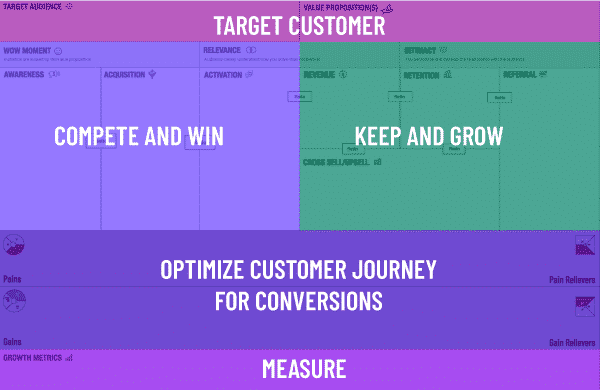Growth marketing. Just another buzzword that you should use in meetings and online, or is there more to it?
Table of Contents
What is growth marketing?

Growth marketing is defined as the strategies, tactics and techniques used to focus on growing a business, product or service. Unlike regular marketing activities, the emphasis and activities focus on accelerating growth.
Growth marketing or growth hacking are words that have become popular in the media. These buzzwords are often associated with startups. New ventures have limited time and budget to get traction with a market.
In particular, platform businesses need to scale quickly to benefit from network effects. In other words, getting enough users to make it useful and attractive. It’s no good having a platform like Linkedin if only 200 or even 2000 people use it! You need millions.
Whether you like it or not growth marketing has become a major part of the marketing landscape.
Confusing or useful? I’ll take you what is growth marketing and give you some examples and ideas for how you can adopt some of the core parts.
If you want to grow then you need to have a systematic way of doing it. A lot of businesses approach marketing in a random way – trying a few things here and there but not having a clear way to assess progress or even change course if needed.
Growth marketing is more proactive than reactive—it’s not about quick fixes. It adopts a more methodical approach to growth.
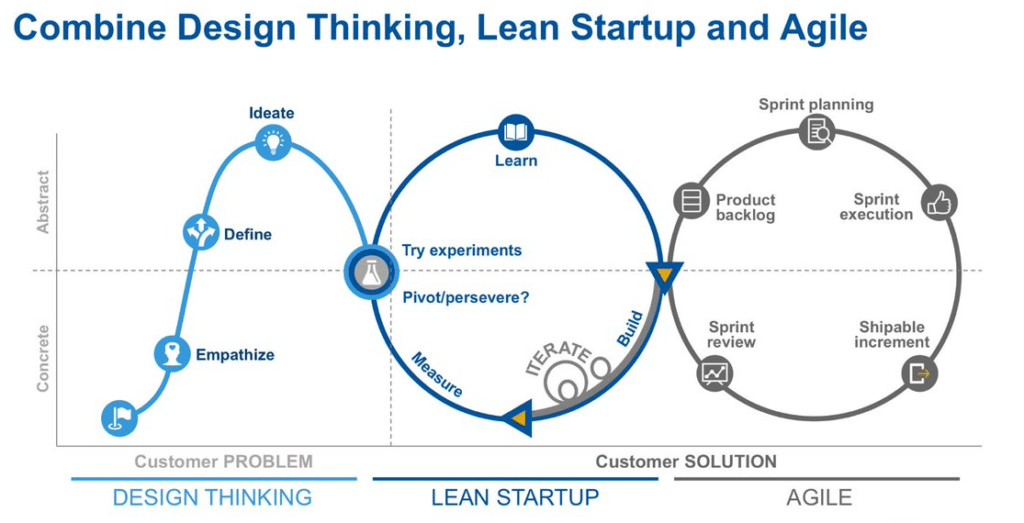
Growth Marketing: A Definition
It’s easy to get stuck doing the same things in marketing, trying to think of the next big sale, contest, or promotion that can grab some valuable sales towards your quarters quota.
But those short-term solutions and quick fixes don’t resolve the underlying problems you have.
Growth marketing = an insane focus on customers + adaptive marketing practices + a system to plan and optimize marketing.
Growth hacking is an agile and adaptive marketing methodology that focuses on how to get, grow and keep customers.
It means developing a core set of hypotheses about your customers, testing them, and scaling the things that work and ditching and things that don’t. Most businesses simply spread themselves too thin and don’t understand where to place their money and time to get the best results.
They try too many things and often do them poorly. Growth marketing is about reducing and focusing on the things that drive growth – relentlessly.
What Skills Do You Need To Be A Growth Marketer?
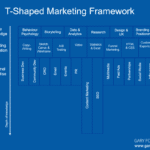
A growth marketer needs to have skills and experience in marketing, analytics, psychology, led generation, AB testing as well as web technologies.
I’ll go into more detail further down this post but essentially here is a list and a few of the core digital marketing skills.
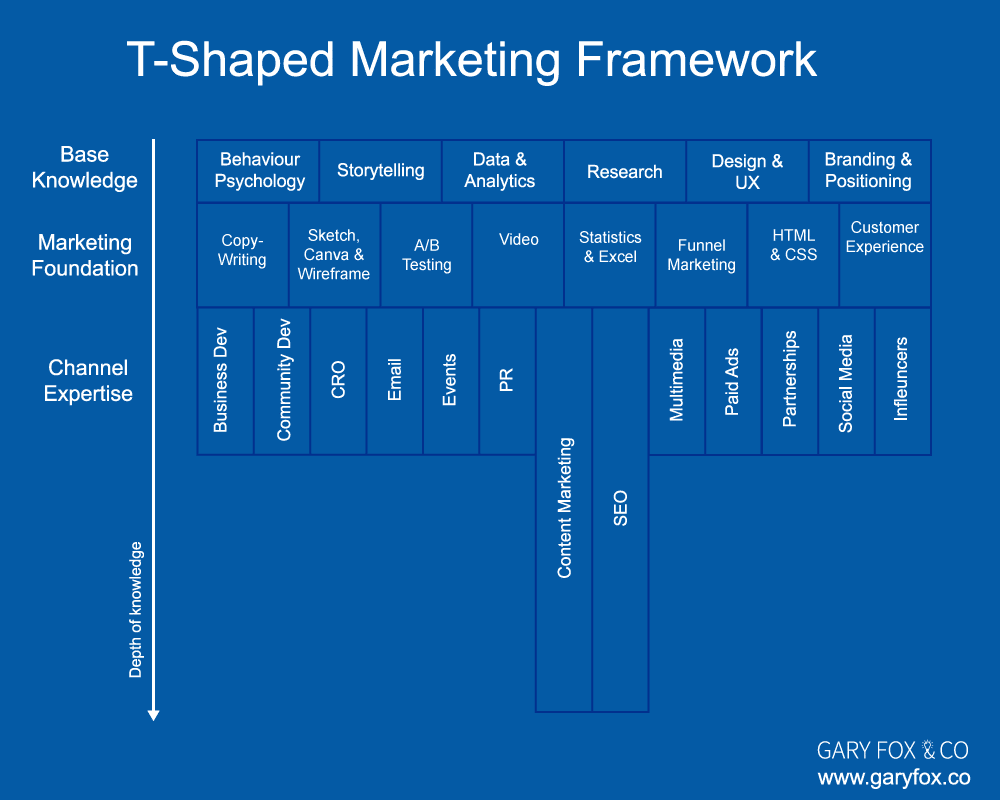
Where Did Growth Marketing Come From

Sean Ellis, who currently runs Qualaroo, coined the term “growth hacking” in his article, “Find a Growth Hacker for Your Startup.”
He defined a “growth hacker” as, “[…] a person whose true north is growth. Everything they do is scrutinized by its potential impact on scalable growth. Is positioning important? Only if a case can be made that it is important for driving sustainable growth (FWIW, a case can generally be made).”
Andrew Chen, who currently does growth at Uber, wrote in 2012 Growth Hacker is the new VP Marketing, which then went viral (2.4K shares) and so the term “growth hacking” moved to become mainstream.
The scenario is that a fledgeling startup (usually a software as a service – SaaS company) needs to prove market-fit and scale quickly. With heavy-weight investors having risked their money in the startup, the pressure is on to show they made the right decision!
You might have heard about Lean Startup methods and those sort of terms. Well, growth marketing is a mix of different marketing methods but adopts many of the core principles found in the lean methodology.
If we take two approaches – that are not incompatible, then you can get an idea of some of the methods and approaches used that growth marketers have adopted.
The diagram below isn’t perfect and misses a few points but it comes close to the blend of methods used.
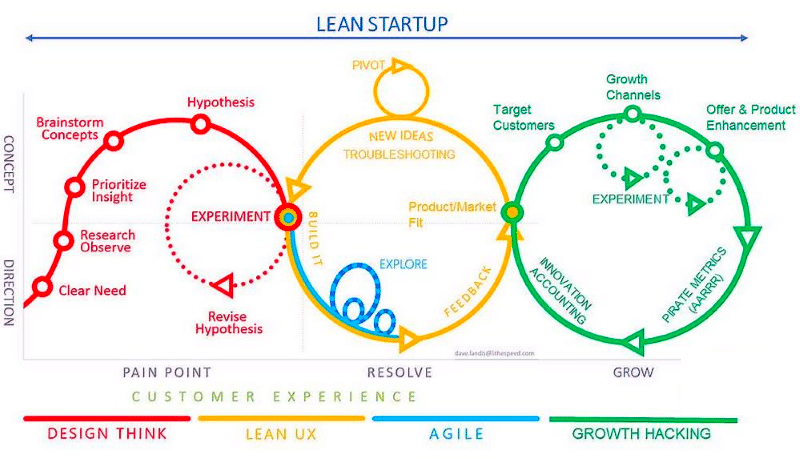
In this guide on growth marketing, I’ll talk about the research, remove some of the hype and give you a proven method to adopt growth marketing for your business.
Why Is Growth Marketing Popular?
Growth marketing has only been around for a few years. But the main reason is obvious: everyone wants to grow ridiculously fast and acquire millions of users and dollars in revenue.
Over 500,000 new businesses start in the US every year, and over 200 billion dollars is collectively spent on marketing each year.
Venture capital investors spent nearly $131 billion across 8,949 deals last year, according to new data from PitchBook and the National Venture Capital Association.
- Most venture capital funds have about a ten year fund life.
- This means is that a venture capital firm must source, vet and invest in good companies and those same companies must have a liquidity event within ten years or the fund will not be able to return capital to its limited partners.
- With this timer on venture-backed startups, companies must accelerate growth at all cost.
We only have some much attention and time each day. It’s not surprising then that it’s getting more and more competitive in most markets and harder to get more customers.
If you want to grow your business you have to compete and do things better and at a lower cost than your competitors. You have to have an approach that systematically helps you to quickly:
- learn how to focus on the right customers (not any customers)
- identify what customers want
- know what they respond to
- determine why they buy
- offer relevance and value to them
- provide the right triggers and reasons to buy
- nurture them, so they remain loyal
Growth Marketing Examples
It’s good to understand some of the ways that others have used different marketing tactics to drive growth at scale.
Most companies follow the traditional major channels for most app launch campaigns:
Organic Growth
- Organic Traffic: SEO, ASO, redirected traffic
- Content Marketing and online presence
- Community Engagement
- Natural Growth / Referral / Virality
- Traffic Hacks & Growth Hacking
Traditional Funnels:
- Launch Platforms (product hunt, app store featuring etc…)
- Press Release
- Paid Advertisements
- Third-Party platforms
- Partnerships
However, when you take a look at some of the major growth marketing success stories you notice a few new and creative approaches to problems.
Example 1. Airbnb
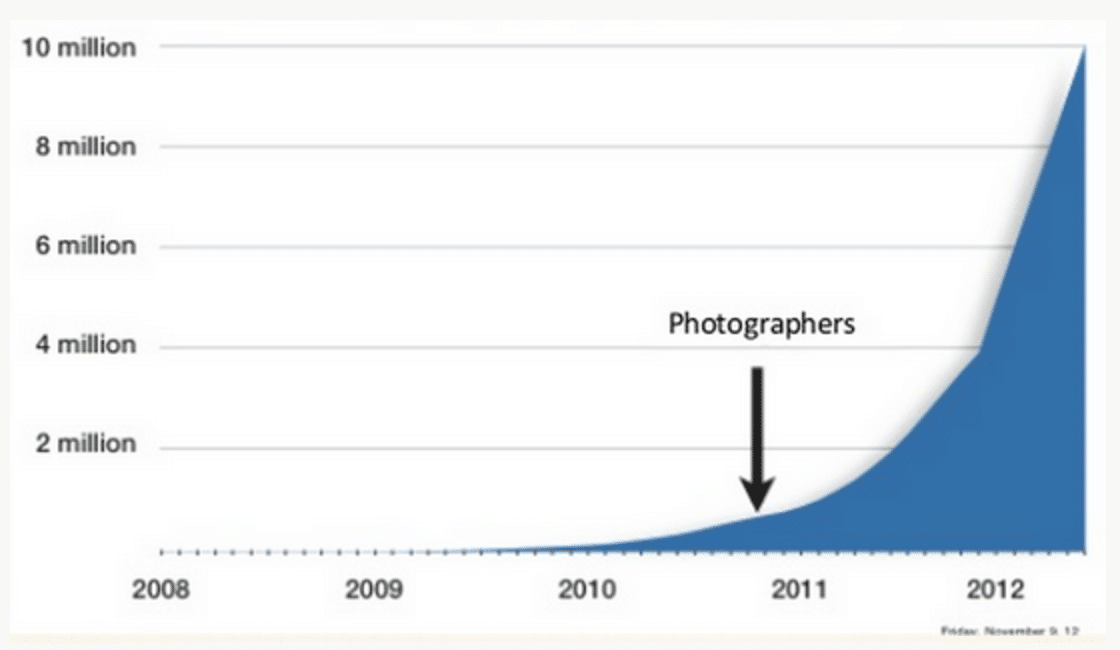
You might be familiar with the famous couch-surfing connection company now, but did you know that Airbnb got its start on Craigslist? This is what I mean by chasing attention like Gary Vee. Airbnb realized that most of its target audience was searching for places to stay on Craigslist.
The company had already proved its ability to be creative, especially during the Obama-McCain election, but it started to gain traction in a big way when it began to post its listings on Craigslist.
Using the Craigslist hack, Airbnb scaled from 50,000 listings to 550,000 listings.
A few fundamental mechanisms:
- Being a two-sided marketplace, AirBnb had to optimize one side first, to fuel growth on the other side.
- The growth strategy can be broken down into – Sticky, Viral, and Paid. Usually, companies adopt a combination of all three but with one playing a dominant role.
- They had already verified their Problem Solution Fit through their first few rentals (had a need, and got paid), and validated business models/unit economics (cash-flow positive).
In a nutshell, optimizing 1 metric or quality to boost other correlated metrics, is the essence of “Growth Marketing”.
Although the ‘Craiglist moment’ was important, Photography also played an important role.
As a result of high-quality travel-related content, and incentivized referral program ($25/$75 travel credits for renters and hosts), their growth took off.
Example 2. Dropbox
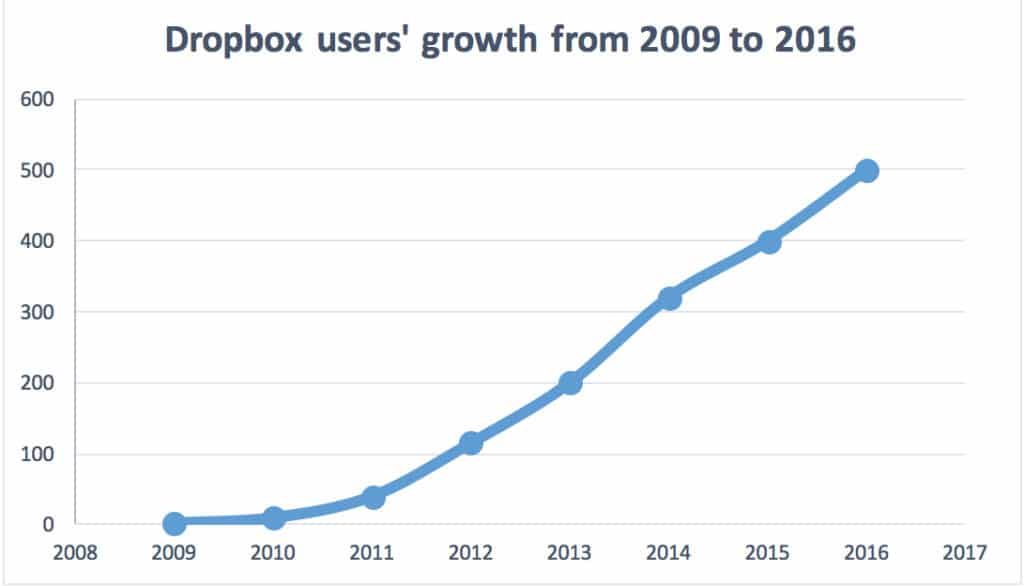
Dropbox is another company known for creative growth hacks, which is why it’s listed in our roundup of growth hacking strategies.
Dropbox gamified its onboarding process, offering existing users more free storage for linking their Dropbox account to Twitter and Facebook, and sharing information about Dropbox on those social sites.
That was a free way to get new users and to grow exponentially.
What Dropbox also did was to add incentives for people completing tasks on Dropbox.
As an example by sharing a file, got people a reward. Dropbox now has 500 million users, so that growth hack definitely worked!
Example 3. Slack
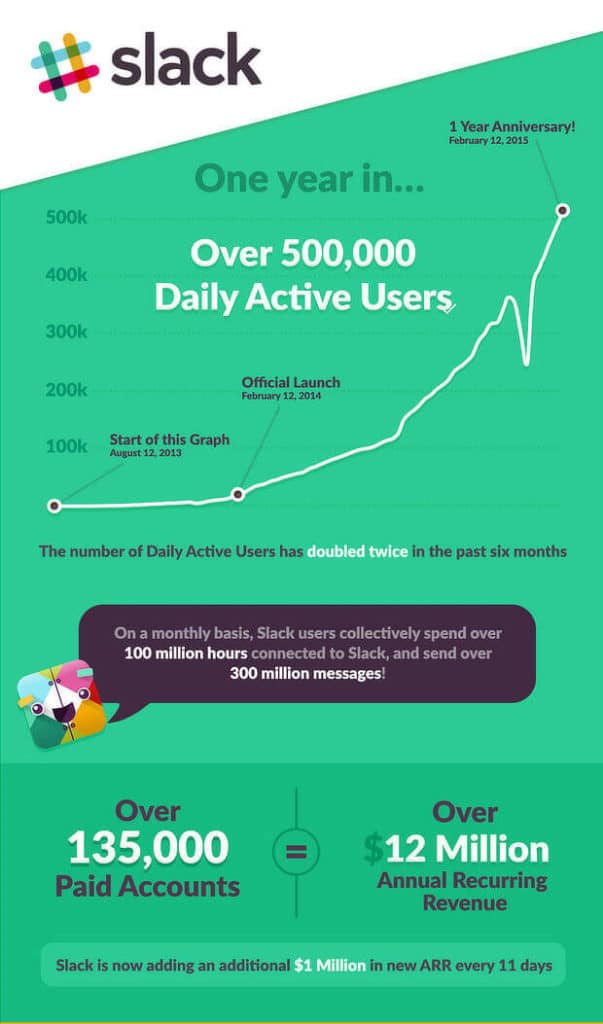
Marketing vs. Growth Marketing
Most marketers place too much focus on marketing tactics at the top of the funnel. 88% of marketers currently use content marketing to attract a defined audience and then funnel down into a conversion.
85% of marketers state that lead generation is the most important goal of their marketing efforts.
The problem is that there are segments of the funnel that are being missed. Beyond the acquisition of the customer, there’s an entire lifecycle that many aren’t leveraging for growth.
Growth marketing focuses on the total lifetime value of the customer.
The main goal is to design growth from initial market-fit to purchase through to customer retention and referrals.
Growth Marketing Stages
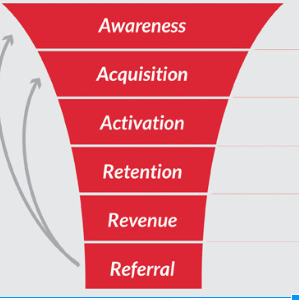
The most common framework that growth marketers refer to is AAARRR (sometimes referred to as pirate metrics).
The Growth Marketing Steps
For over 3 years I’ve been using a canvas to help people plan and develop their growth marketing plan. Essentially, relating it to the customer experience.
The growth marketing blueprint is below.
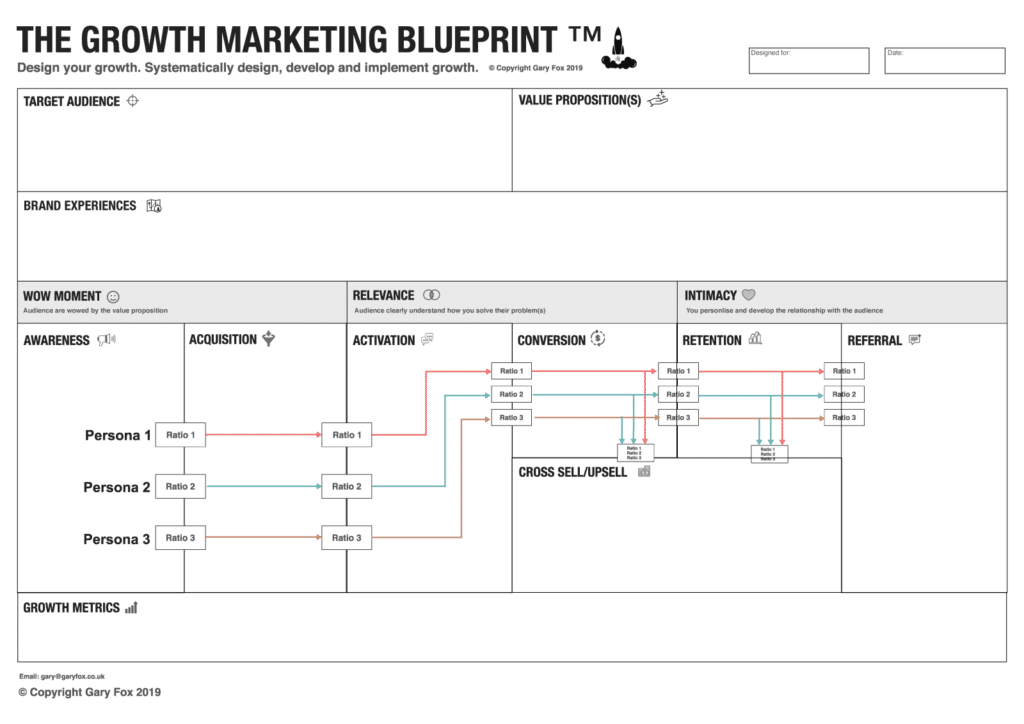
Step 1. Awareness
Awareness is the brand-building efforts that educate prospects about your brand and solution.
This is where you use tactics like social media, SEO, paid-ads content marketing/distribution and influencer marketing (see influencer marketing statistics).
Experimenting on paid-ads, along with landing pages, is the most effective way to drive traffic and test your value proposition(s).
Step 2. Acquisition
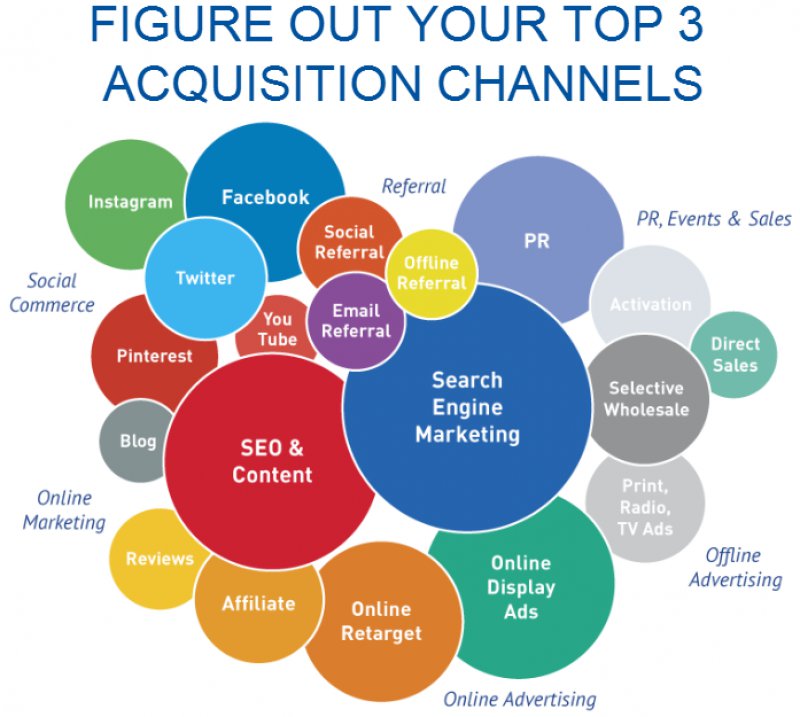
Acquisition is how you develop a process to generate leads and acquiring net new customers. There is a tonne of different marketing tactics for this.
Remember that growth marketers refine and focus their marketing spends and choose the right channels to focus on.
Step 3. Activation
Activation is getting people to use the product or service they purchase as much or as quickly as possible. An onboarding strategy and plan is critical for this to succeed.
Step 4. Revenue
Revenue involves understanding the key financial levers that affect costs and revenue. Ultimately, the goal is to minimize costs e.g.cost of acquisition and maximize profits e.g. keep customers for longer.
Retention
Retention is keeping customers delighted.
Increasing customer retention rates by just 5% can improve profits by up to 95%. If you want massive growth, you need to change your mindset to focus on more than just acquisition.
To improve retention, growth marketers offer personalized support for customers and educational content that helps people gain value from the product or service.
For example, Slack noticed that I use “command + K” shortcut instead of the “jump to” search bar and gave me the option to hide the search bar.
Personalization is critical at this stage e.g. allowing users to find new ways to use your product or services.
Step 5. Retention
Every business has a churn rate. Some though are much lower than others. Notably, for some business models have a much lower churn rate.
Most marketing activities and budgets go into the top part of the funnel. However, losing as many customers as you are spending to put into the business means you are standing still.
The focus on retention has two purposes:
- Your customers are your greatest test and feedback on what you need to improve. They have used your product or service and therefore can also let you know about their overall experience. In other words how ey was it to buy and use. What support they needed and how you brand delivered that.
- Retaining more customers makes growth a lot easier. Additionally, a growing customer base means more customers that can generate referrals.
Step 6. Referral
Customers happy with your product or services will refer you to other customers.
Tesla offers free supercharger miles in exchange for referrals. A growth marketer could experiment with different incentives or promotional methods around the referral program to increase results.
Referrals are 5X more likely to buy than cold propects.
What do growth marketers do?
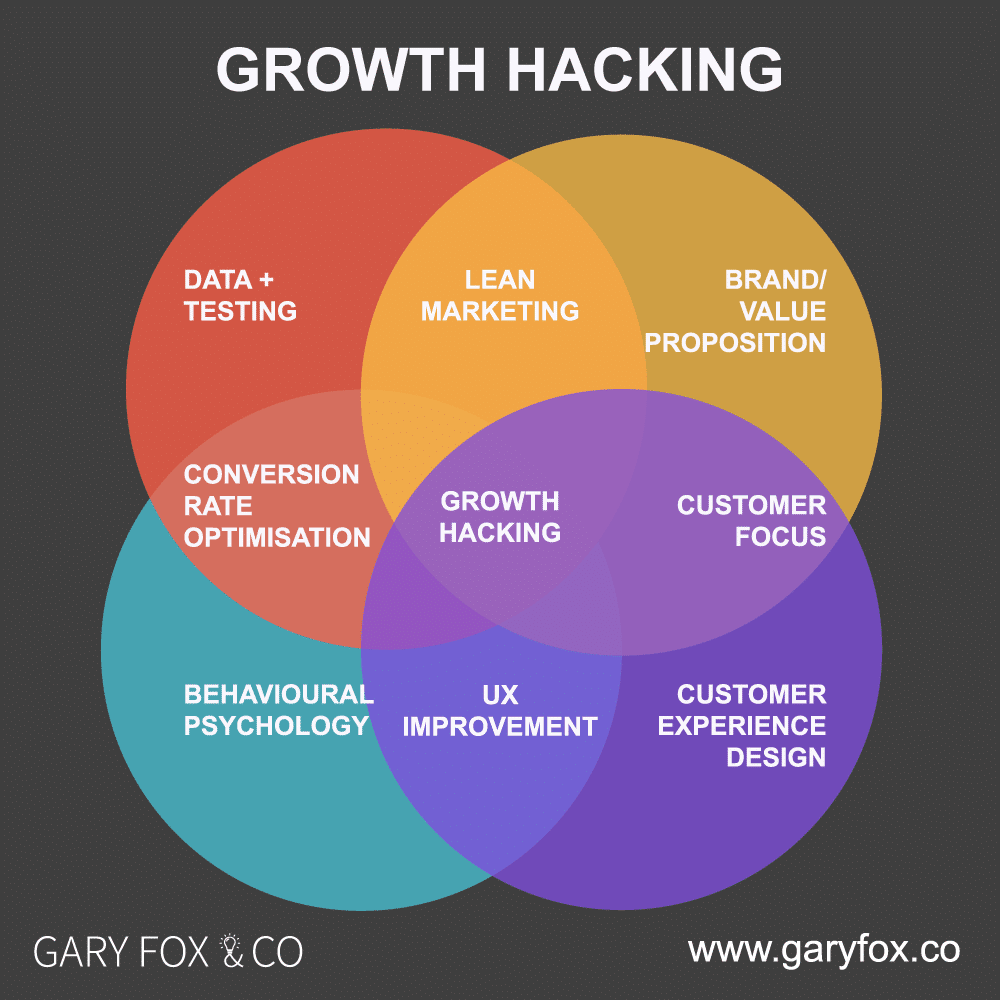
The first and most important part of everything to do with marketing is the customer.
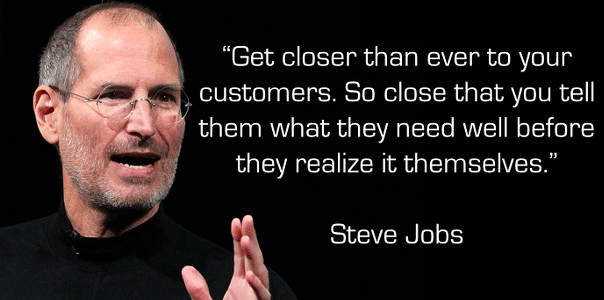
Growth marketers have a blend of skills but an obsession with testing and a laser-sharp focus on finding the things that drive growth. That means experimenting and testing.
But that loop of hypotheses – experiment – validate, isn’t just at the top of the funnel.
Growth marketers look to make the product sticky and develop customer loyalty. That means refining the product and the marketing and looking at ways to continually add value.
But the whole process starts earlier than that. It starts with understanding the customer and getting the right fit early between the customer and the product.
What does that mean? Well, three things:
The product is something that customers actually want – it solves a problem/offers value.
- They get it – you find customers that understand what your offering and you communicate the value clearly – customers understand what it is and how it benefits them – quickly and easily.
- you prove that they will pay for it.
- They use it and carry on using it.
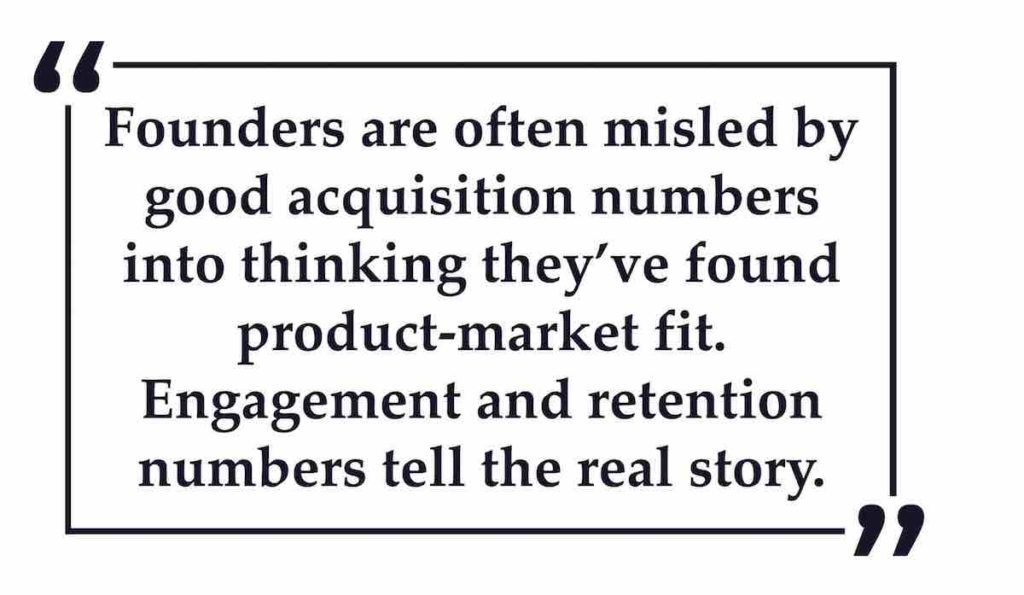
Step 1. Create products people actually want
This sounds too obvious, doesn’t it?
How many marketers (and often management) don’t ever go out and watch customers? Or talk to them. Or see how customers use their competitor’s products.
Market reports are great – you can get an understanding of market trends
Customer reports are valuable – they help you understand changing behaviour and trends.
But, talking to customers, observing how they behave e.g. heatmaps on websites, watching how they shop in a store (where they go/don’t go, look…) this is where it counts.
I write about this in my emails – how to gain insights for product ideas.
Step 2. Data-driven Marketing
Make decisions on data, not hunches.
The range and breadth of marketing tools now is incredible. Many of them provide data that can be used to help you improve.
Some examples of data are:
- AB and multivariate testing for ads
- AB testing headlines
- AB testing emails
- sign-up rates from pages
- open rates in emails
- traffic by post/page and SERP ranking
- heatmaps to show what customers click
- Customer Lifetime Value (CLV)
- Cart abandonment rates
The trick is to focus on the right metrics not all the metrics. Plan your metrics based on how you design your business and growth.
Step 3. Benchmark and Find Your Weaknesses
Before you invest in growth, you need to find out where the bottlenecks are in your marketing: customer acquisition, customer churn, open rates (building the customer relationship).
Top of the Funnel
Given the typical diagram of a funnel, you wouldn’t think that the widest part of your funnel would be a bottleneck. But this is the phase where you’ll lose the majority of your traffic due to qualification.
I’m not talking about you or your team qualifying the traffic to determine the best leads; this is about your traffic qualifying your brand. Your top of funnel content is that point where a first impression is made.
Your brand and value proposition are the crucial elements that impact your wow moment.
Based on the content message, quality and positioning. First of all, this will determine if your target audience believe that they are dealing with the right people/experts to solve their problem. Second, they need to gain a level of trust otherwise they will never opt-in.
Middle of the Funnel
While it’s not the most common bottleneck, you will lose customers at this point.
This is the consideration phase. It’s the relationship-building and nurturing point, but it’s also where a lead determines if their need is urgent enough to warrant action and if you’re the right choice.
65% of marketers have no established process for lead nurturing. If things don’t match up they’ll either opt-out or grow stale within the funnel, leading to a huge bottleneck down the line.
Bottom of the Funnel
This is the “final” step where a conversion is made to turn a lead into a customer. It’s also the second most common bottleneck. If your funnel and nurturing aren’t on point, you’ll never get them to cross the finish line.
79% of leads never convert into sales due to poor performance, nurturing, and engagement.
Step 4. Stay Current with Techniques
Marketing is fluid. Customers react and change to marketing practices.
Furthermore, marketing technology advances and provides new ways to reach, convert and grow your customer base.
Technologies that are increasingly important are:
- Artificial Intelligence

Just a couple years ago, Gartner analysts predict that AI technologies will become part of every new software product and service shortly – a prediction that Harvard Business Review said a while ago.

2. Chatbots

Chatbots are already an important part of growth marketing as AI-based technology improves instant messaging.
Surveys show that:
- 63% of respondents prefer messaging an online chatbot to communicate with a business or brand.
- Chatbots will power 85% of customer service by 2020.
- Top benefits of chatbots are 24-hour service (64%), instant responses to inquiries (55%) and answers to simple questions (55%).
- By 2022, chatbots will help businesses save over $8 billion per annum.
- 80% of businesses want chatbots by 2020.
The important point is that changes in technology and marketing are rapid. Growth marketers need to be on top of these changes and adapt their strategies and tactics to reap the benefits these changes bring.
Step 5. Build the relationship – stay relevant
Email marketing is still the best way to communicate with customers and to personalise your communications.
Using tags and funnels you can easily break groups of people out and target them by interest, behaviours and much more.
Whilst the generic email is acceptable in some cases – customers are demanding more relevance in how business communicate with them.
What’s more, as you’ve seen, if you collect email addresses, you can even build an audience of eager and loyal followers who can’t wait until you actually launch a product.
Step 6. Stories, Content and Media
Marry up your content strategy with your customer journey – be timely and relevant.
No matter what you’re doing or selling online, customer demand quality. Consumers see news and blogs every day. CBS News claims we see ~5,000 ads per week and we see plenty of garbage.
You might have heard it before but we see an estimated 5000 brand impressions a day – and think about how many you remember – very few!
You will only succeed online with great content. Be customer-centric and make something great for others to share and consume.
Step 7. Expand Your Market
Growth marketing is about focus, focus and yes – focus.
Don’t target everybody.
To reach the majority of people, your product must first successfully pass through innovators and early adopters.
These are small groups and communities that you need to target explicitly. Geoffrey Moore has written an entire book called “Crossing the Chasm” that talks about this phenomenon.
Products either captivate the first 15% of the market or they go to die there.
Step 8. Be Creative
If you are a regular reader of my blog or my emails you already know that I am passionate about creativity.
Creativity is something we can all learn and with practice get better at.
Growing a business involves tackling a multitude of problems and solving them creatively.
Growth marketing focuses on creatively finding new ways to add value to the customer.
Step 9. Develop Your Customer Experience Management (CXM)
Customer experience design is an essential element of retaining customers. Yet, few companies focus on the whole of the journey and less so the post-acquisition stage. It’s almost like they say “phew we got you” and forget to think about how to segment, personalise and develop the relationship.
Growth marketing requires a 360 degree understanding of the customer and value delivery.
Customer Experience Management is all about designing this upfront and building relevant communications, content and relationships with your customers.
Step 10. Agile Marketing
There are two ways to prioritize for growth marketing:
Startups: Prioritize and deploy based on what will have the highest impact with the least amount of effort. This will help keep your costs down.
Everyone else: Prioritize and deploy based on what will bring in the highest potential gains with the least time to implement.
Growth is all about high-velocity, high-tempo testing. This high frequency of deployment among your list of ideas lets you quickly deploy experiments in order to shake out the insights and determine what is garbage and what is a repeatable process that you want to continue to utilize.
Growth Marketing Find Out More
If you want to find out more about the latest growth marketing strategies, tactics and tools then carry on with this guide. Alternatively, start to plan your growth marketing by using the Growth Marketing Blueprint (canvas).
